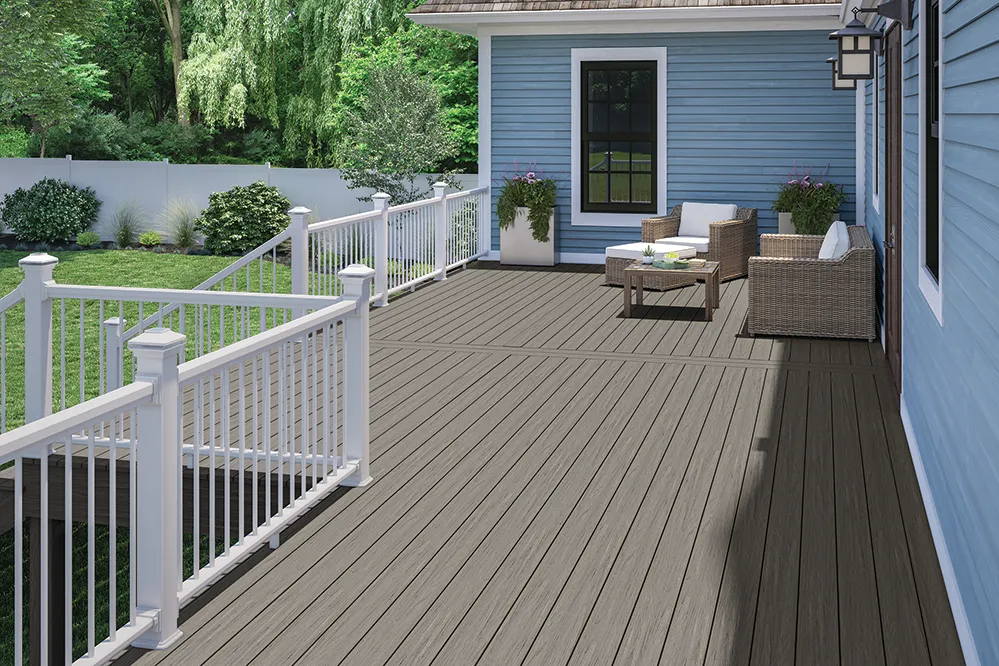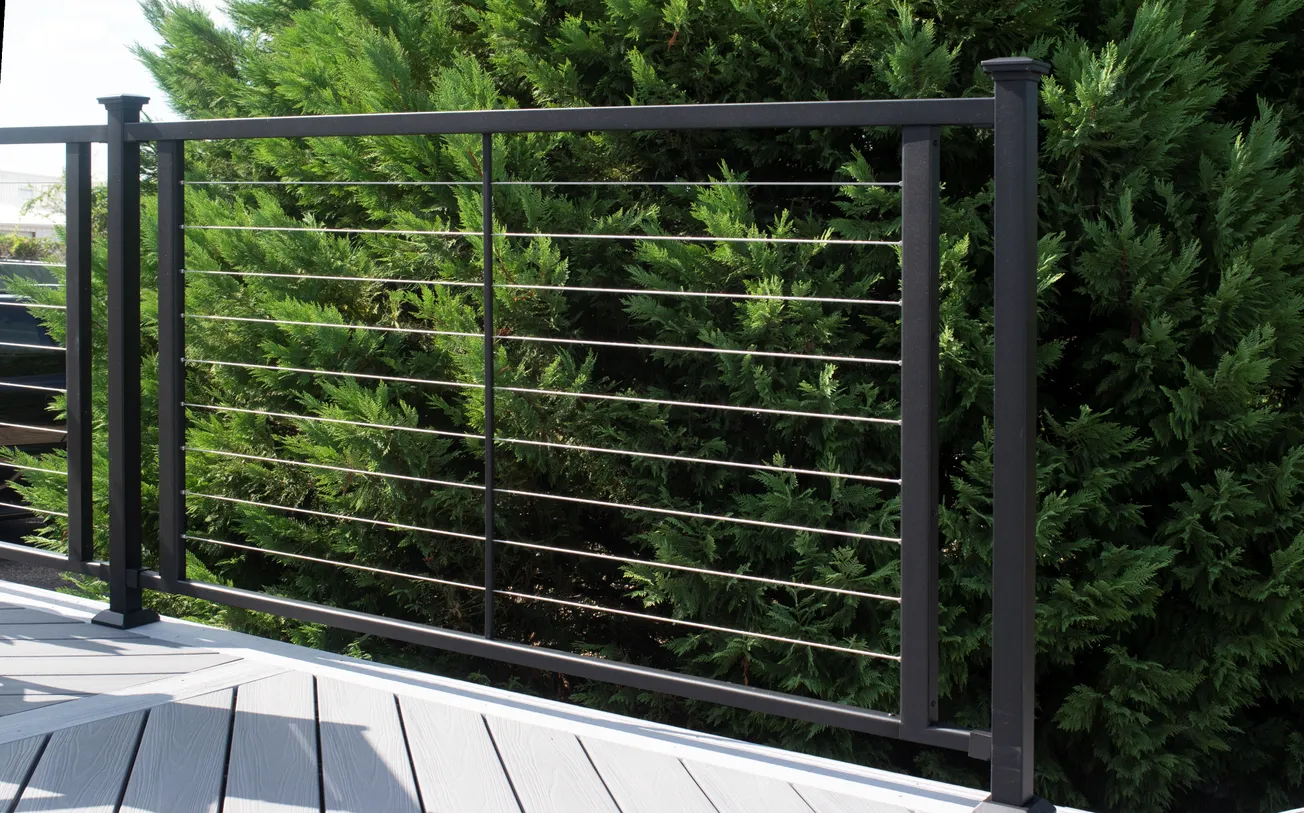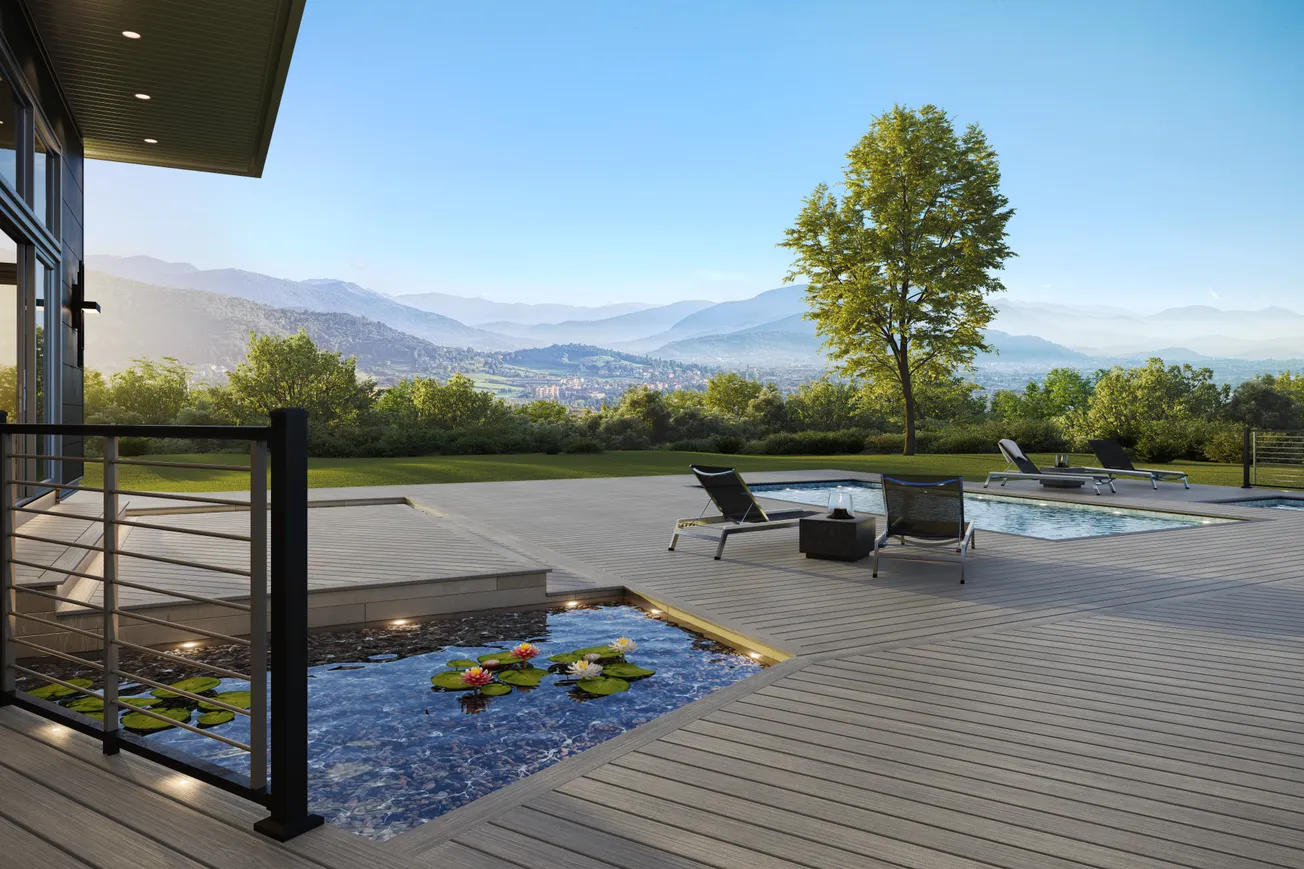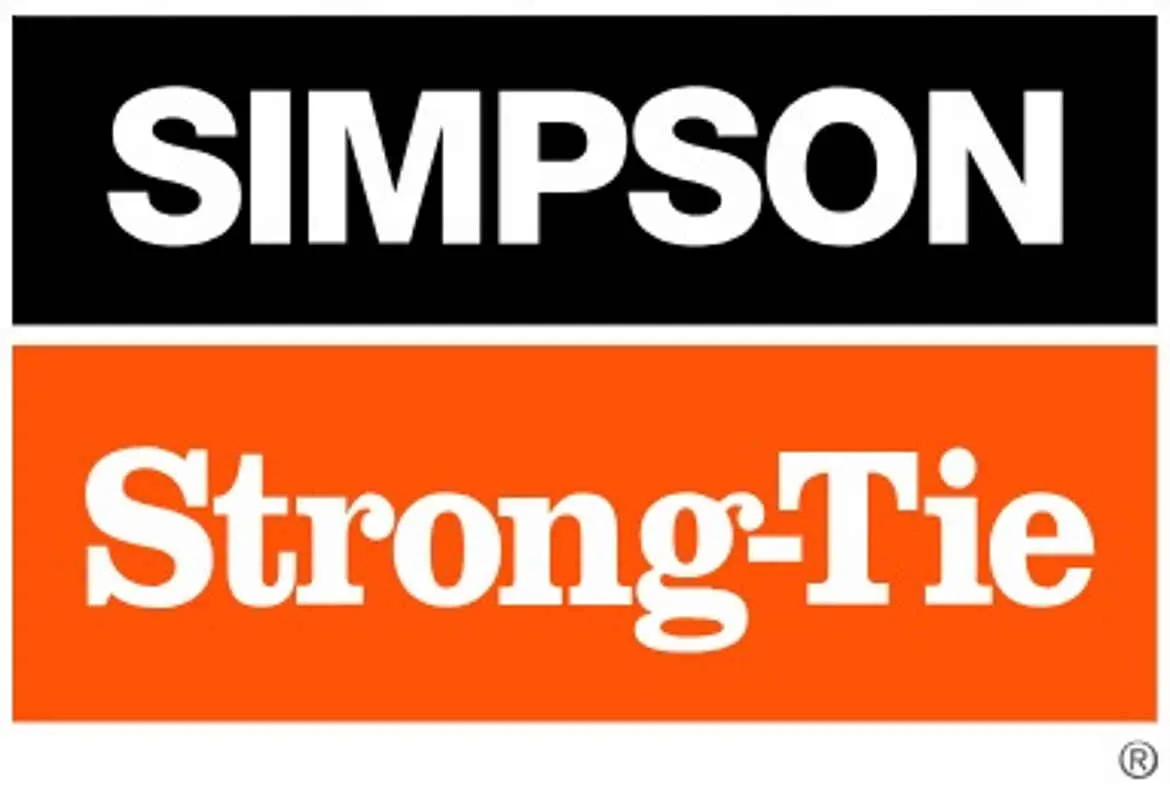Table of Contents
According to the American Chemical Society (ACS), a team of researchers who presented their findings at ACS’ Spring 2024 meeting this week, has designed a composite decking material that stores more CO2 than is required to manufacture it, providing a “carbon-negative” option that meets building codes and is less expensive than standard composite decking.
David Heldebrant, an organic chemist who is one of the project’s principal researchers, said apart from a few types of cement, carbon-negative composites are scarce. The composite decking his team has developed “is one of the first composite materials to be demonstrably CO2 negative over its life cycle.”
Composite decking is typically made from a blend of wood chips or sawdust and plastic, such as high-density polyethylene (HDPE). To make these composites more sustainable, one alternative is to use fillers that are waste products or would otherwise be burned.
That’s an approach Heldebrant’s colleague Keerti Kappagantula was taking: using low-quality brown coal and lignin, a wood-derived product left over from papermaking, as the filler in decking composites. To make the pulverized coal and lignin particles mix with and stick to plastics, the research team needed to add ester functional groups to the particles’ surfaces. Heldebrant, who works at Pacific Northwest National Laboratory (PNNL) and develops specialized liquids to capture CO2, found out about this work while chatting over coffee with Kappagantula.
Satish Nune, another project investigator, and Heldebrant were excited when they heard about this. “Esters are essentially carboxylic acids, which are a captured form of CO2,” Heldebrant explains. So, the team wanted to do the same thing and put CO2 onto the surface of the particles in the composite to make the material even more environmentally friendly while improving the composites’ mechanical performance.
To test the feasibility of this approach, the team turned to a classic chemical reaction to form a new chemical bond between CO2 and a functional group called a phenol, which is abundant in wood products like coal and lignin. After undergoing the reaction, the lignin and coal particles contained 2–5% CO2 by weight.
The team then mixed varying ratios of these particles with HDPE to form brownish-black composites, and they tested the resulting properties. A composite containing 80% filler maximized the amount of CO2 content while demonstrating strength and durability that meet international building codes for decking materials. It was manufactured via friction extrusion using PNNL’s shear assisted processing and extrusion (ShAPETM) machine. The researchers used this material to form 10'-long composites that look and feel similar to standard wood composites found in decking.
In addition to their favorable physical properties, the new composite boards reportedly offer a substantial price and sustainability advantage. They are 18% cheaper than standard decking composite boards. They also store more CO2 than is released during their manufacture and lifetime, Heldebrant says. If the 3.55 billion ft. of decking sold in the U.S. every year were replaced with the researchers’ CO2-negative composite decking, he adds, 250,000 tons of CO2 could be sequestered annually, which is equivalent to the yearly emissions from 54,000 cars.
Next, the researchers plan to make additional composite formulations and test the properties. They envision that carbon-negative composites could be developed for a range of building materials, such as fencing and siding.
In the meantime, the team is working to commercialize the material. According to Heldebrant, the researchers are “still working at the lab scale and hope to secure project funding from the Department of Energy to begin a new project to scale up our materials.” He adds that they are probably two years away from releasing a product to market if all goes to plan.
The research was funded by the United States Department of Energy Office of Fossil Energy and Carbon Management (FWP 78606) and the Southern California Gas Company (SoCalGas).
About The American Chemical Society
ACS is a nonprofit organization chartered by the U.S. Congress. ACS’ mission is to advance the broader chemistry enterprise and its practitioners for the benefit of Earth and all its people. The Society is a global leader in promoting excellence in science education and providing access to chemistry-related information and research through its multiple research solutions, peer-reviewed journals, scientific conferences, eBooks and weekly news periodical Chemical & Engineering News. ACS journals are among the most cited, most trusted and most read within the scientific literature; however, ACS itself does not conduct chemical research. As a leader in scientific information solutions, its CAS division partners with global innovators to accelerate breakthroughs by curating, connecting and analyzing the world’s scientific knowledge. ACS’ main offices are in Washington, D.C., and Columbus, Ohio. For more information, visit www.acs.org.







